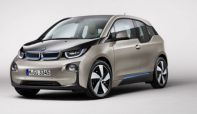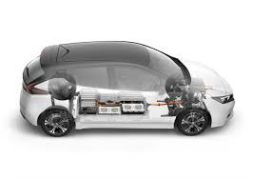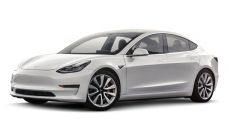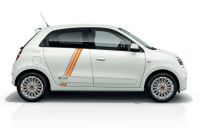Service Battery : lead battery used to power the low voltage network of the vehicle (14V DC), for the headlights, power of computers ...
Traction battery: battery bank is used for vehicle traction. The voltages used range from 300 to 700V. The technology currently used uses Li-Ion (and its derivatives ...) The energy capacity of a traction battery is about 10 to 50 kW.h.
BEV: Battery Electrical Vehicle, ie full Electric Vehicle.
BETTER PLACE: minute exchange stations batteries project . This project has been developped since 2011 in Israel and Denmark, in collaboration with Renault (QUICKDROP system).
Charger: charging device, that converts grid voltage (50/60Hz, 110, 230V or 400V) into DC voltage for the traction battery.
DC / DC converter (DC / DC) converts high voltage (traction battery) to low voltage (service battery) .
Field weakening control strategy of tension comprising decreasing the flow of induction created by the rotor at high speed. Required by the limitation of the battery voltage.
Electrical homologation: a legal obligation of the employer that ensures that the training of the employees working near an electrical installation is sufficient. The french specification is the UTE C 18-550.
ICE : Internal Combustion Engine. Motor using a fuel as an energy source.
Parallel hybridization (Mild or Full): process consisting in assisting the ICE by a an electric engine (10 in 50 kW) taking the energy from a traction battery reloaded during the phases of deceleration. This battery can possibly charged by the voltage network (see PHEV). According to the degree of hybridization the car can move in electric 100 % mode for a few kilometers in reduced speed. Toyota Prius, Honda Insight and Peugeot 3008 hybrid4 are parallel hybrids.
Serial hybrid: this is an electric car equipped with a powerful range extender. It is powered by a battery recharged by an engine coupled to an alternator with rectifier (generator for simplicity). The GM (Chevrolet) Volt / Opel Ampera in Europe uses a heat engine of 55kW to recharge a battery of 8.8 kW.h. Thus the vehicle can travel 60 km in 100% electric mode, and 500 km when the engine is running.
Micro-hybridization: use of a starter-alternator that cuts the engine when stationary and at very low speeds (less than 10km / h). This process known as Start and Stop reduces around 15% of fuel consumption.
Electric motor: reversible electric power converter into mechanical energy. Reversible (regenerative braking), they are of three types: continuous, asynchronous (induction) and synchronous.
Synchronous Motor: AC motor type used for electric cars last generation because of their excellent conversion efficiency (from 90 to 93% with UPS on a wide range of use). They are of two types:
- Permanent magnet rotor. Very compact and efficient, but the supply is 97% controlled by China.
- Wound Rotor: slightly less compact and require electrical contact with the rotor and an additional voltage chopper for induction.
Voltage inverter: electronic converter for supplying the electric motor in three-phase voltages, variable frequency (0 to 300 Hz) from the DC voltage of the traction battery. The engine control strategies to control the torque applied is very complex: flux vector control, DTC (Direct Torque Control). More information ...
PHEV (or PHV): Plugged-In Hybrid Electrical Vehicle: Hybrid car, like the GM Volt.
Range Extender: thermal range extender. This "generator" extends the range of an electric vehicle recharging the battery.
Annual mileage threshold of profitability: penalized by high constant costs, but compensated by low energy cost, an EV will reach its profitability beyond a certain annual mileage sity between 5000 and 15000 km depending on different factors (mainly gasoline cost).
SmartGrid (smart grid): evolution of the electrical network made necessary by the integration of renewables (forecast) and the piloting of the use. EDF initiated the change with the deployment of counter Linky.
Start and Stop: see Micro-hybridization.
DC voltage: voltage whose value remains constant with time. This voltage appears across the terminals of the battery.
Three-phase voltage: set of three alternating voltages identical in amplitude and frequency, generally sinusoidal, but phase shifted by a third period.
V2Grid (Vehicle To Grid): use of a part of the stored electrical energy in an electric vehicle or PHEV reinjection into the network to clear the peaks of energy production and costly pollutant. More information ...

10/2012
Dictionary of Hybrid and Electric Vehicle



Training and technology of the electric and hybrid car





Réalisations